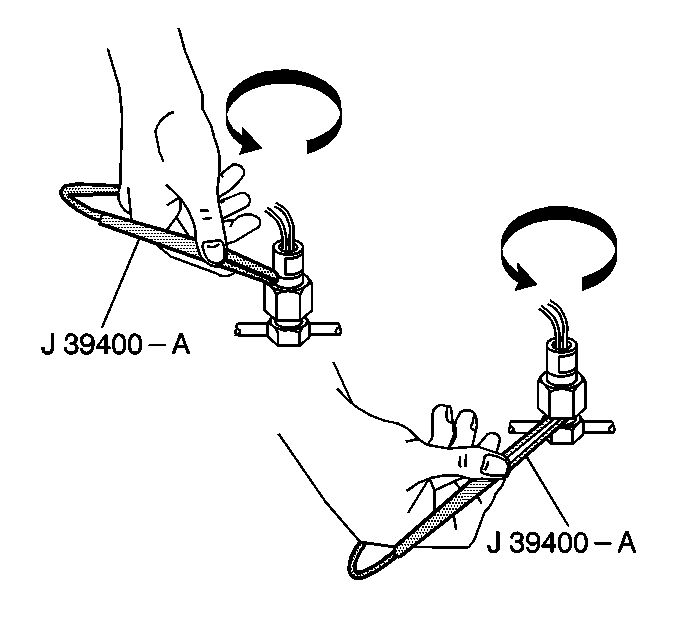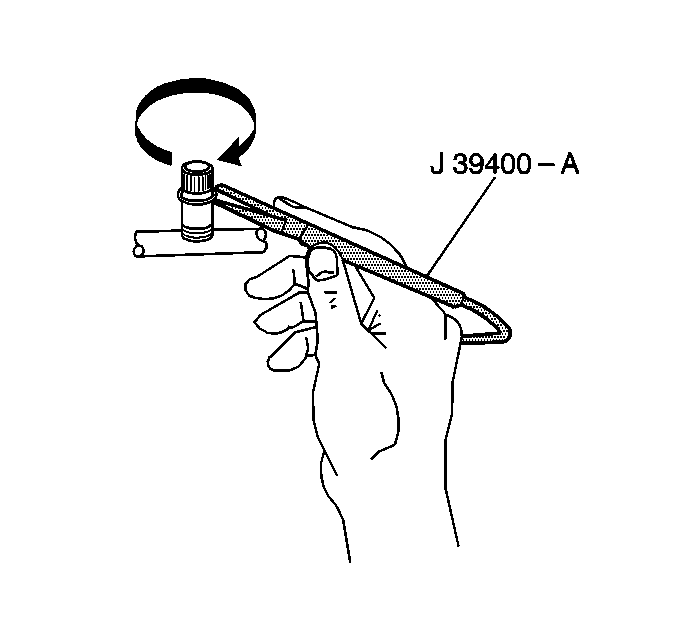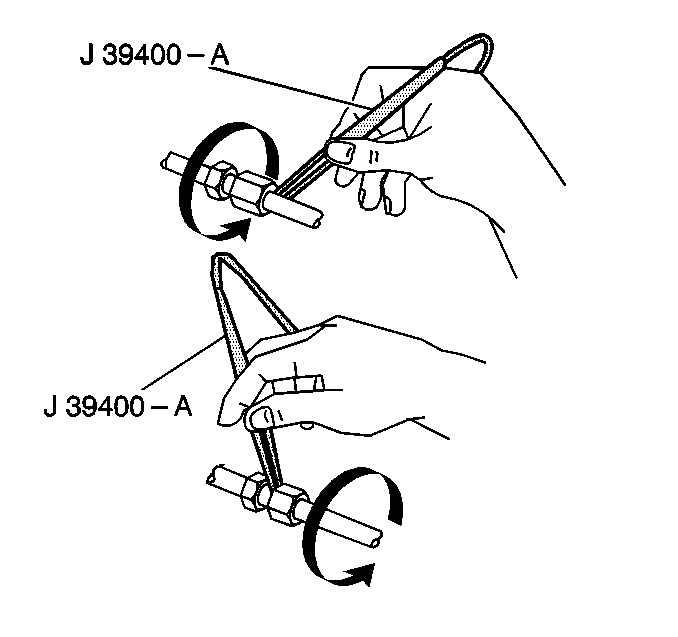Electronic Leak Detection Method
Tools Required
J 39400 Halogen Leak Detector
Use the J 39400 when testing for refrigeration system leaks. This unit operates on a 12 volt DC and provides an audible signal which increases in frequency when a refrigerant leak is detected. Properly calibrate the tool to the instructions and use at the proper setting for the system being tested. The J 39400 has the following three settings:
| • | R-12 |
| • | R-134a |
| • | Gross leaks -- for isolating very large leaks already found at one of the other settings |
The J 39400 is sensitive to windshield washing solution, many solvents and cleaners, and some adhesives. Work on a clean and dry surface. The following connections may all be tested using this detector, each connection being completely circled moving at 20-50 mm (1-2 inches) per second with the tip of the probe no more than 6 mm (0.25 in) from the surface:
- Test the refrigerant pressure sensor.
- Test the service valves.
- Test the entire length of the hoses or tubes.
- Test the evaporator core hose or tube connections.
- Test the compressor rear head.
- Test the compressor hose assembly connections.
- Test the accumulator connections.
- A leak is indicated when the audible tone goes from a steady 1-2 clicks per second to a solid alarm. The balance knob should be adjusted frequently in order to maintain the 1-2 clicks per second.



If a leak is not found, proceed to the Refrigerant Leak Diagnosis table.
Step | Action | Yes | No | ||||
|---|---|---|---|---|---|---|---|
DEFINITION: Inspecting the refrigeration system for leaks using the J 39400 | |||||||
1 |
Did you find and repair the condition? | System OK | |||||
2 |
Did you find and repair the condition? | System OK | |||||
3 | Test the condenser for leaks at the following areas:
Did you find a leak? | ||||||
4 | Replace the condenser. Refer to Condenser Replacement . Did you complete the repair? | -- | |||||
5 | Test the compressor seal for leaks using the following procedure:
Does the leak detector indicate a leak? | ||||||
6 | Replace the compressor seal. Refer to Compressor Shaft Seal Removal and Compressor Shaft Seal Install . Did you complete the repair? | -- | |||||
7 | Test the evaporator for leaks using the following procedure:
Does the leak detector indicate a leak | ||||||
8 | Replace the evaporator core. Refer to Air Conditioning Evaporator Core Replacement . Did you complete the repair? | -- | |||||
9 | Test for proper system performance. Refer to VDOT Air Conditioning (A/C) System Diagnosis . Does the system operate correctly and no further system leaks are indicated? | System OK | Go to Florescent Leak Detection Method | ||||
Florescent Leak Detection Method
Tools Required
| • | J 41447 Fluorescent Tracer Dye |
| • | J 41436-1 Tracer Dye Injector |
| • | J 28428-E High Intensity Black Light |
Notice: The tracer dye J 41447 was developed for use with the A/C Refrigerant 134a (R-134a) equipped vehicles or with vehicles that have been retrofitted from R-12 to R-134a. Do not use any other tracer dye in the R-134a system. Use of another dye may affect the system reliability and cause premature compressor failure. Use only a 1/4 oz. charge of the dye. Larger amounts may compromise the reliability of the A/C system. After adding the tracer dye, clean the service valves and all affected surfaces of the dye with GM Engine Degreaser GM P/N 1050436 or an equivalent in order to prevent a false diagnosis.
Liquid Leak Detection/Pressure Testing Methods
Due to their lack of sensitivity and restricted visibility in today's refrigerant systems, liquid/bubble leak detectors have very limited usefulness. Therefore, the liquid leak detection/pressure testing methods are not recommended for this vehicle.
Service Port Seal/Cap
The primary seal for the service ports is the sealing cap. The cap contains a specially designed O-ring or gasket which provides a leak free seal. Should the cap be loose, missing, or the wrong usage, a loss of refrigerant could result.
